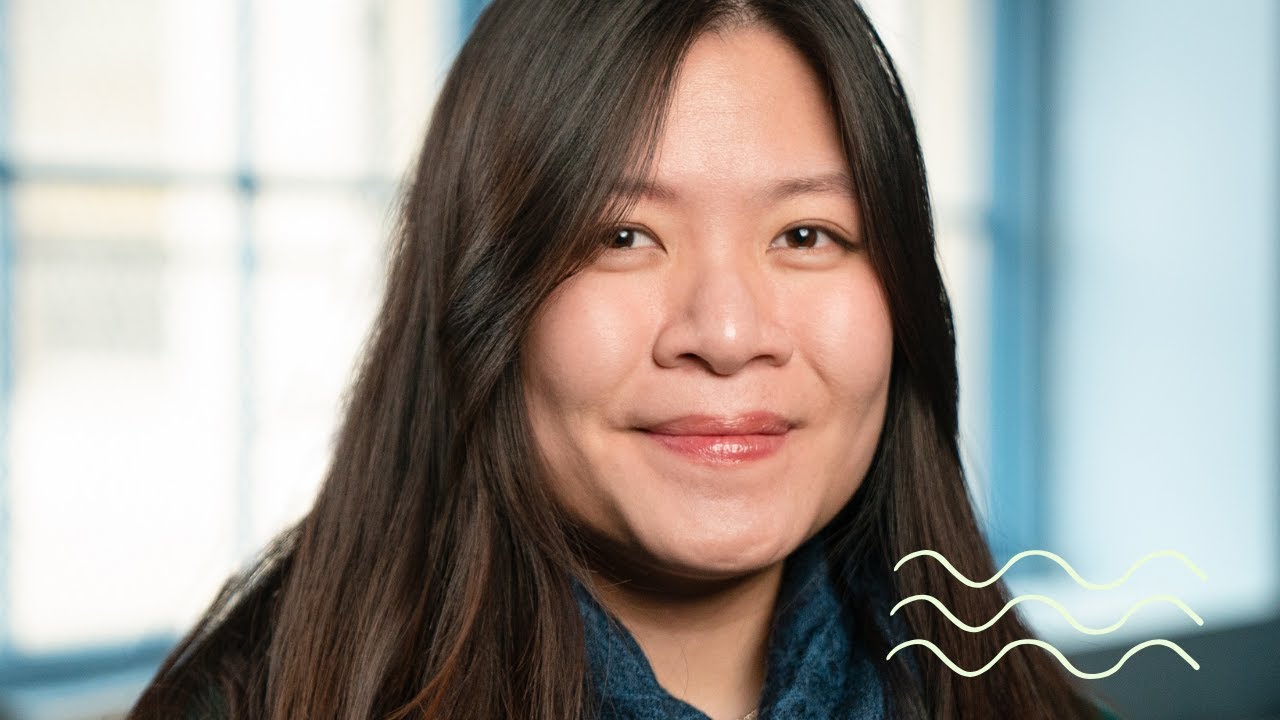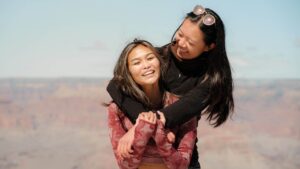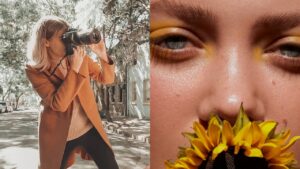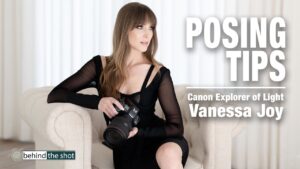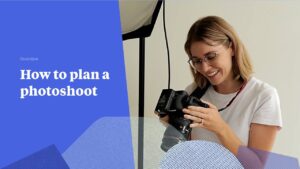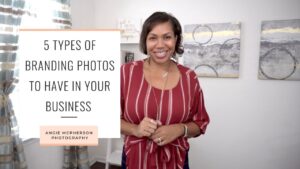A lot of a photography session’s success depends on the photographer’s skill and abilities, but there are several things clients can do to make their sessions better. From planning ahead to choosing a comfortable outfit, here are some helpful tips that will help photographers and their clients have a great photo session experience.
Plan a shoot that has a purpose – whether it’s to capture holiday cards or updated family portraits. This will give you a reason to get creative with your clients and make them feel more at ease during the session. It’s also important to have a backup location in case there are unexpected issues at your original spot. For example, construction, a closed venue or an overzealous security guard could make your plans change at the last minute.
Choose a location that is easy for your clients to get to. Avoid large parks that are difficult to navigate and will take time for your clients to find you. Also, make sure the location you choose is on property where it’s safe for photography and that you’re allowed to photograph there (and that permission has been verified).
Set clear expectations with your clients from the start. Create a pricing sheet with all your products and their prices and send it to your scheduled clients before their sessions. This will help clients know what to expect and how much they can spend on add-ons like framed prints or digital images.
Make a plan for how long your session will last and how many images you’ll deliver to your clients. Providing this information will help clients budget for their photography investment and will eliminate any surprises down the road.
Be prepared to edit and deliver images in a timely manner. It’s typical for photographers to offer a first round of editing within two weeks of the session and then to host an ordering session over Zoom for clients to select their favorite images for printing. Once those are completed, product delivery is typically a week or two after that.
Invest in a professional wardrobe and practice some styling before your sessions. This will make you feel confident and look more professional during your session, helping to ensure the best results. Choose neutral colors and simple textures that coordinate well with each other to keep your wardrobe from becoming too distracting in your photos.
Practice posing and lighting techniques on friends or family members before you work with clients. It will also help to calm your nerves, making you more comfortable working with your client and more effective at directing them during their own session.
Be a good example for your clients by being organized and taking the time to do an efficient job. This will set the tone for the rest of your business and help to build trust with your clients. For example, be sure to pack extra batteries for your flash, a water bottle and any other items you may need during the session.
Photography Equipment For Beginners
Photography equipment can be an expensive hobby, but if you know what you’re buying, it can make your camera more capable. In the beginning, you’ll want to focus on getting a good camera body and a lens. You’ll also need to consider a tripod and some accessories.
The single most important piece of equipment for any photographer is the lens. It’s what actually focuses light onto the sensor and is responsible for most of the image quality. While you can use the kit lens that comes with your camera, it is recommended that you upgrade to a better one for more flexibility as a beginner. The next piece of photography equipment you should consider investing in is a flash. This is used to add lighting to your subject and can be useful in portrait, wedding, and commercial photography. The flash should be able to sync with your camera and come with different attachments for various purposes. For example, you can attach a diffuser to your flash to soften the light and eliminate shadows. There are also polarizer and neutral density filters available for your camera that can be helpful for landscape photography, such as eliminating reflections from water or sky.
Other important items include a hard drive to store your images and photo editing software. There are many options, but it’s important to choose an editing program that is specifically designed for photographers and includes the capabilities that you’ll need. Adobe Lightroom is an excellent choice for most, but there are also other affordable programs such as GIMP or Corel Paintshop that have similar abilities to Lightroom.
A camera bag is also an essential item to have for storage and transport of your gear. It should be large enough to fit all of your equipment, but not too big that it will get in the way when you’re shooting. There are many options available, with bags starting at around $30 and more elaborate ones running up to $120. It’s also a good idea to invest in a cleaning kit for your gear, including a rocket blower to remove dust from your camera and lenses without touching the sensors, which could cause smudges and streaks.
For some types of photography, you’ll also need a tripod. This can be for creative reasons, such as long exposures for night sky photography, or for practical purposes like keeping the camera steady in difficult conditions. The Mike model from Three Legged Thing is a great choice for most beginners, since it’s lightweight and has good stability.
A final piece of photography equipment that can be very useful is a monitor calibration tool, which can help ensure your colors are accurate when editing photos. There are a few options on the market, with the most popular being Datacolor and ColorMunki. They both cost around $100 and are a worthwhile investment for any photographer. There are free imaging editors that can be used as well, such as GIMP and Skylum Luminar.
The Basic Principles of Portrait Photography
Portrait photography is a very broad field that covers everything from casual photos for social media to highly stylized, dramatic images for use in magazines or advertising. It’s also a popular choice for aspiring photographers who want to level up their skills and begin a career as a professional photographer.
Regardless of the intended style, a great portrait should be well-focused and flattering to your subject. To accomplish this, you will need to have a good understanding of the principles of portrait photography. The first of these is to make sure your focus is sharp. A poorly focused portrait will be unflattering and distract from your subject. This can be easily fixed in post-processing, but it’s best to avoid this mistake altogether.
Another important principle is to pay attention to the lighting. Natural light is usually the preferred option for portraits, but it must be diffused to prevent harsh shadows and unnatural skin colors. To do this, you can use a simple diffuser like a white sheet or a soft box to reduce the sun’s glare. Then, you should position your model so that the light is hitting their face at a 45-degree angle. This will help make your subject’s skin look glowing and healthy.
The next important principle is to consider the background. A good portrait should not only be clear and uncluttered, but it should also complement your subject’s style and personality. For example, a colorful backdrop can add to the energy of an energetic and lively model, while a more muted backdrop can be used to create a more subdued and elegant photo. The most important thing to remember is that the background should never take away from the subject.
To really make your subject’s eyes stand out, try using a catch light to highlight them. This is a technique that all the best professional portrait photographers use and it’s extremely effective at bringing life to an otherwise boring image. To create a catch light, simply ensure that the light source is reflecting off of your subject’s eyes. The reflection is most visible in the upper-corner of the eye, but it can be placed at other points as well.
One final tip is to be aware of the lens you’re using. A wide-angle lens with a shallow depth of field is ideal for portraits, as it keeps the focus on your subject and blurs out any unnecessary elements in the background. Goellner also recommends choosing a lens that opens up really wide, as this will allow you to capture more light with less vignette and distortion.
Portrait photography is a wonderful, creative and fulfilling endeavor that can be done with any kind of camera, even a phone. However, if you’re serious about becoming a professional portrait photographer, it’s a good idea to invest in a DSLR or mirrorless camera that offers functional manual controls. This will enable you to create high-quality images that will set you apart from the competition.
Photography Poses
When it comes to Photography poses, there are so many options. Whether you are shooting an engagement, wedding or just everyday portraits, it’s important to have some great ideas in your back pocket.
One great pose that is often overlooked is the “hands in the pockets” pose. This can be used in any type of portrait and is a very simple but effective way to add interest. It can be a casual, playful or romantic photo pose depending on the outfit and surroundings and the subject’s facial expression.
It is also a good idea to include some full-length portraits in your portfolio. A full-length portrait usually shows the entire head and body, while three-quarter portraits show the face and upper torso. This can be done by simply bending the model’s body and having them lean on an object, such as a fence, door frame or chair.
This is a great posing idea that can be used for many types of portraits and is a nice way to showcase the model’s hair and clothes. The model can be either sitting, standing or lying down and the pose is really easy to do.
For this pose, the model can lean against an object such as a gate or doorframe if they are on location or can use a chair if in the studio. The model should place her hands on the hips and push the arms away from the torso, which will help to create a more flattering pose for most people. The hands can be resting or the model can make a fist and bring it up to her chin for a more romantic and elegant look.
Another good posing idea is to have the model place her hands in her hair and look up, which can be a fun and flirty pose for all sorts of portraits. It is also a good idea to have the model look off to the side of the photo so that the viewer doesn’t know exactly what the model is thinking about.
The most important part of any portrait is the face and how it is posed. It is critical that the model does not make any major blunders with her face, such as saying “cheese” or having her lips overly extended. It is also important to have the model squint slightly, which will help elongate her face and add a bit of drama.
Finally, the last great posing idea for portraits is to have the model hold something. This can be a book, a flower or anything else that will add an interesting element to the portrait. This is a fun way to add a little personality and can be used in any type of portrait. Just be sure to choose a prop that is not too big or that the model will have difficulty holding. Also, if the model is not comfortable with holding the item, have them put their hands in their pockets instead.
Photography Lighting
Photography lighting is a critical skill that you need to master if you want to take your pictures to the next level. Whether you are shooting beauty, fashion or landscape, the quality of your light can make or break your image. The direction, hardness or softness and color temperature of your light will affect the mood and emotion that is portrayed in your photograph.
For example, a portrait of a model with a warm golden glow will evoke feelings of romance and nostalgia while an image lit with cold blue tones may convey a sense of dread and fear. The choice of lighting will also determine how the details and textures in your subject are portrayed.
Essentially, the quality of your image depends on how much shadow or highlight there is in it. The less contrast there is in your photo, the more soft and flattering it will be. Conversely, high contrast images will have more highlights and harder shadows. The intensity of your light source can also be determined by how much the shadows are emphasized or diminished.
When you are taking photos, it is important to remember that the camera’s metering system works on the principle of reciprocity. In other words, when the scene is underexposed, the camera will try to compensate by exposing more of the sensor. This is why it’s so important to use the correct exposure settings in order to get the best results.
The type of lighting that you choose will also have a huge impact on the image that you end up with. A simple change in the direction of your light can completely transform an image and give it a different mood. For instance, light originating from above gives a flat and dull effect while light coming from the side will illuminate part of your model’s face while casting shadow on other parts. This technique is known as Rembrandt lighting and is very effective at giving your subjects a more dramatic look.
Another important factor is the consistency of your light. Continuous lights, or lights that don’t use flash, are ideal as they allow you to see a live preview of how your image will look before taking it. This can be a great tool when doing test shoots to see how your lighting will work out before you start shooting with clients. Continuous lights can be a wide variety of things including sunlight, household lamps and even LED panels.
The last major factor is the color or temperature of your light. This can be achieved by changing the white balance in your camera. Cooler colors have a blue cast to them while warmer colors have more of an orange or golden yellow tint.
Understanding these different factors will help you to become a more creative photographer. Experimenting with various types of lighting will give you the knowledge and experience necessary to be able to create beautiful and striking images no matter what the occasion.
